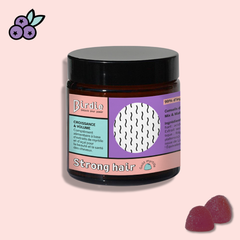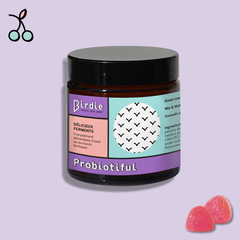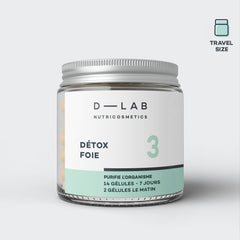In this article, Célia Vepori Lucciardi, facialist and founder of the Institute A Perla Rara shows you how to enjoy the sun safely!
L'exposition au soleil et le bronzage ont été mis à la mode en 1920 par Coco Chanel. Mais à cette époque, on ne pouvait pas connaître les conséquences des expositions répétées à cet ami chaleureux, car on arborait alors ombrelles et chapeaux à larges bords pour conserver le teint laiteux des héroïnes de romans.
Today, only the Western world advocates a matte, tanned complexion. In much of the rest of the world, the opposite is true: a fair complexion is a sign of beauty, purity and social success.
Beaucoup de compléments alimentaires solaire ont fait leur apparition les dernières années sur le marché pour répondre à cette demande occidentale.

The sun's rays fall into several categories: infrared, visible light, ultraviolet, X-rays and gamma rays.
Aujourd’hui nous allons développer l’axe des ultraviolets qui sont les rayonnements les plus nocifs de la liste . Ils sont classés en trois types : les UVC, les UVB et les UVA. En voici quelques précisions.
Les UVC sont les rayonnements les plus dangereux des ultraviolets . Utilisés comme germicides dans les hôpitaux, ils s’attaquent aux molécules biologiques en touchant l’ADN, ce qui leur confère un potentiel cancérigène très important. Heureusement, la couche d’ozone empêche la presque totalité de leur passage en les filtrant.
Les UVB sont les grands responsables du « coup de soleil » . Ils induisent des dégénérescences cellulaires qui amènent au mélanome, le cancer de la peau. En effet, ils génèrent des désordres moléculaires qui, à force d’être répétés, saturent le système de réparation de l’ADN et entraînent des «erreurs » dans le génome des cellules atteintes.
UVA rays, on the other hand, cause premature actinic ageing (i.e. sun-induced ageing ), as well as accelerating the development of pigmentation spots. Although UVB is the main cause of skin cancer, UVA can also contribute. They are responsible for the production of free radicals. These molecules initiate chain reactions that damage DNA, proteins and lipids, and generate cancer cells. Beware: these UV rays pass through glass.
Sommaire
I. Exposition au soleil et bronzage
Melanocytes are found in our cells and constantly produce melanin, the biological pigments that characterize our skin, hair and eye color.
The sun stimulates this process by producing even more melanin, which is released into the skin cells, coloring the skin and giving it a tan.
Les UVA vont dans un premier temps entraîner la « pigmentation immédiate » qui donne un bronzage rapide mais éphémère. Quelques jours plus tard, va apparaître une pigmentation dite retardée, celle du bronzage. Ce dernier est à son maximum au bout de 20 jours.
Meanwhile, the skin thickens. This is a natural reaction designed to protect us from the sun. However, this thickening does not provide sufficient protection.
How to prepare your skin for the sun this summer?
Heure idéale pour bronzer
Pour obtenir un bronzage optimal tout en minimisant les risques, il est recommandé de s'exposer au soleil en dehors des heures les plus chaudes de la journée. En effet, entre 10h et 16h, les rayons UV sont les plus intenses et donc les plus dangereux.
Quelle durée pour un bronzage optimal ?
La durée d'exposition idéale varie en fonction du type de peau. Pour les peaux claires, il est conseillé de ne pas dépasser 15 à 20 minutes d'exposition directe par jour. Pour les peaux plus foncées, cette durée peut être légèrement augmentée, mais il est toujours crucial de ne pas exagérer pour éviter les coups de soleil et les dommages à long terme.
II. Le coup de soleil: une réalité
En cas de trop forte exposition, les UVA et UVB vont léser notre peau et créer un érythème solaire , appelé plus communément « coup de soleil ».
Celui-ci atteint son intensité maximale au bout de 24h environ . Il n’est pas une réelle brûlure mais une réaction inflammatoire des cellules.
UVB rays destroy our cells, resulting in redness. Then the cells break off and the skin peels.
Peeling is very risky because these cells have a high potential for cancerous transformation.
Every time the skin is exposed to UV rays and tans or burns, every cell in the skin is altered, as well as the DNA. Although the skin can repair superficial damage such as sunburn, the damage to the skin cells and DNA remains.
Les dangers de la surexposition
La surexposition au soleil peut entraîner des conséquences graves pour la peau. Outre les coups de soleil, elle peut provoquer des dommages à long terme tels que le vieillissement prématuré, des taches pigmentaires et un risque accru de cancer de la peau. Il est donc essentiel de se protéger adéquatement et de limiter le temps passé au soleil.
III. Le vieillissement actinique: les risques associés
Sun-induced aging differs from chronological aging. The first difference is that it induces premature aging.
What's more, sun-induced aging is completely unstructured: wrinkles appear in a totally anarchic way, whereas chronological aging would intensify expression lines first, then those due to skin sagging.
Wrinkles are deeper and more numerous, and the skin rapidly loses its elasticity. Pigmentation spots also appear.
Les conséquences et leurs causes
Le vieillissement actinique est causé par une exposition prolongée aux rayons UV, qui endommagent les fibres de collagène et d'élastine de la peau. Cela entraîne une perte de fermeté et d'élasticité, ainsi que l'apparition de rides profondes et de taches pigmentaires. Les radicaux libres générés par les UV jouent également un rôle clé dans ce processus de vieillissement prématuré.
IV. La vitamine D: un allié du soleil
L’hiver : protégez votre peau avec un indice de protection 25-30 minimum que vous renouvellerez au cours de la journée. Faites attention lors de vos déplacements en ville/voiture et protégez-vous derrière les vitrages.
On rainy or grey days, remember that the sun's rays penetrate clouds, which filter out only 50% of ultraviolet rays. So beware of foggy, seemingly sunless weather.
Au printemps , préparez votre peau au soleil en l’exfoliant pour la régénérer et créer une base saine. Augmenter l’indice de protection de votre crème solaire pour répondre aux nouvelles journées ensoleillées.
Moisturize your skin and force yourself to drink. Prepare your skin for the sun by using the D-LAB Active Sun Complex which tans the complexion without the sun, while preparing the skin for tanning.
Rich in antioxidants and anti-free radicals, this treatment will enhance your skin's beauty while providing it with all the elements it needs to increase its resistance and better protect it.
Pendant l’été , un indice 50 sera fortement recommandé avec protection UVA à large spectre . Veillez à bien renouveler votre crème toutes les deux heures au maximum et privilégiez toujours les filtres 100% naturels pour vous et notre environnement.
Even with sun cream, avoid basking in the sun, and take a wide-brimmed hat with you wherever you go.
The Duo Eclat-Total réunit le Complexe Soleil et le Complexe Peau Apaisée pour intensifier le bronzage et apporter à la peau une protection totale contre les méfaits du soleil.
On retrouve notamment dans le Skin Calming Complex a microencapsulated melon extract titrated in SOD. SOD plays an essential role in preventing oxidative stress, and also offers very high protection against UV damage, making it an ideal summer ally. You'll offer your skin greater resistance to ultraviolet rays and sunburn, while reducing UV-induced inflammation.
A l’automne, c’est le moment de l’irruption des boutons . En effet, pour se protéger des UV, la peau se défend de l’agression du soleil en s’épaississant. Ce surplus crée une obstruction de l’orifice des glandes sébacées et donne naissance à des microkystes et autres comédons enflammés.
When it is no longer exposed to the sun, the skin will refine again, returning to its original shape. This is when things start to go wrong, revealing accumulation. Gentle exfoliation is called for, and the Skin-Perfect Programme will allow a complete reset of your skin through its detox and regeneration.
V. Exposition au soleil : Nos solutions dédiées
Winter: protect your skin with a minimum sunprotection factor of 25-30, which you change throughout the day. Be careful when traveling in the city/car, and protect yourself behind windows.
On rainy or grey days, remember that the sun's rays penetrate clouds, which filter out only 50% of ultraviolet rays. So beware of foggy, seemingly sunless weather.
In spring, prepare your skin for the sun by exfoliating to regenerate it and create a healthy base. Increase the sun protection factor of your sunscreen for the new sunny days.
Moisturize your skin and force yourself to drink. Prepare your skin for the sun by using the D-LAB Active Sun Complex which tans the complexion without the sun, while preparing the skin for tanning.
Rich in antioxidants and anti-free radicals, this treatment will enhance your skin's beauty while providing it with all the elements it needs to increase its resistance and better protect it.
In summer, an SPF 50 with broad-spectrum UVA protection is highly recommended. Be sure to renew your cream every two hours at most, and always use 100% natural filters for the benefit of both you and our environment.
Even with sun cream, avoid basking in the sun, and take a wide-brimmed hat with you wherever you go.
The Duo Eclat-Total combines the Sunshine Complex and the Soothed Skin Complex to intensify the tan and provide the skin with total protection against the sun's harmful effects. In particular, the Skin Calming Complex a microencapsulated melon extract titrated in SOD. SOD plays an essential role in preventing oxidative stress, and also offers very high protection against UV damage, making it an ideal summer ally. You'll offer your skin greater resistance to ultraviolet rays and sunburn, while reducing UV-induced inflammation.
Autumn is the time when pimples break out. To protect itself from UV rays, the skin defends itself against the sun's aggression by thickening. This excess creates an obstruction in the sebaceous glands' orifice, giving rise to microcysts and other inflamed comedones.
When it is no longer exposed to the sun, the skin will refine again, returning to its original shape. This is when things start to go wrong, revealing accumulation. Gentle exfoliation is called for, and the Skin-Perfect Programme will allow a complete reset of your skin through its detox and regeneration.





